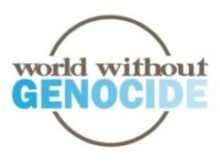The United States Abridges the Human Right to Bodily Autonomy
“I have become convinced that the most serious and unaddressed worldwide challenge is the deprivation and abuse of women and girls.” -Former U.S. President Jimmy Carter[1]
Bodily autonomy is the right to make decisions about one’s own body, including choices related to health, safety from violence, and well-being; all stages of reproduction; and the freedom to seek and access medical care. It is a cornerstone of gender equality and a fundamental human right.[2]
In the US, all individuals, but especially women, girls, gender-expansive people, the disabled, the elderly, and the ill, experience abridgment of their right to bodily autonomy:
Lack of bodily autonomy, dignity, and integrity in choices for conception, contraception, and reproductive rights, including pregnancy termination.
Contraception. In the US, there are severe restrictions on access to safe, accessible, high-quality, and affordable contraception. Without appropriate options for contraception, women’s and girls’ subsequent access to education, economic participation, and full opportunities in all spheres of civic life are significantly limited.
Alternative Methods of Conception. Individuals in the US face severe restrictions on alternate methods of conception, including costs, insurance coverage, and availability of alternate methods of conception, including intrauterine insemination, in vitro fertilization, egg/sperm donation, and surrogacy. These restrictions particularly affect people in rural areas, migrants, and those without insurance or resources to pay for these medical services.
Termination and Abortion. Women face very severe restrictions on access to safe, affordable, and legal terminations of pregnancy, even in cases of rape, incest, or threat to the woman’s health or life.
Lack of bodily autonomy in access to medical care throughout the life course.
Access to Health Care. Individuals in the US face severe restrictions on access to health care options, including palliative care and end-of-life care options, including medical aid in dying.
Transition-Related Care. Severe limitations exist in most U.S. states on access to medical transition-related care for transgender individuals due to discrimination, lack of insurance coverage, and state-level restrictions, particularly for minors.[3]
Lack of bodily safety from harm, especially from gender-based and sexual violence.
Domestic Violence, Femicide, and Rape. Individuals in the US lack safety from domestic violence and abuse, including elder abuse and child abuse.
-
- Domestic violence: 2,000,000S. women are battered by intimate partners every year.[4]
- Elder abuse. As many as 1 in 10 older adults have been victims of elder abuse, most of them women.[5]
- Femicide: An estimated 4,970 females were murdered in 2021, one-third killed by an intimate partner.[6] A leading cause of death of pregnant women in the US is homicide by an intimate partner, a risk many times elevated for women of color.[7]
- Sexual assault: An average of 433,648 rapes or sexual assaults occur each year.[8]
Violence during Ecocide Disasters. The climate crisis is not gender-neutral.[9] Women face the direct impacts of ecocide disasters such as hurricanes, floods, and droughts, and increased risk of violence during these disasters. Women are 14 times more likely to die in a climate disaster than men[10] and women constitute 80% of those displaced by disasters.[11]
In April 2025, a coalition* submitted a Shadow Report, The United States Abridges the Human Right to Bodily Autonomy, to the UN Human Rights Committee for the 50th Session Universal Periodic Review (4th Cycle), United States of America.
View or download the submission below.
*Coalition members include: World Without Genocide, Citizens for Global Solutions, Gender Justice, Compassion & Choices, Genocide Watch, and Transparenthood.
References:
[1] Jimmy Carter, A Call to Action: Women, Religion, Violence, and Power (New York: Simon & Schuster, 2014).
[2] United Nations Population Fund, “What is bodily autonomy?,” https://www.unfpa.org/sowp-2021/autonomy#:~:text=Watch%20on,Read%20story
[3] Caleb Smith and Haley Norris, “Transgender Medical Care: What You Should Know and How To Preserve Access to Care,” The Center for American Progress, December 2, 2024, link
[4] Emory University School of Medicine, “Domestic Violence/Intimate Partner Violence Facts,” https://med.emory.edu/departments/psychiatry/nia/resources/domestic_violence.html
[5] American College of Obstetricians and Gynecologists, “Elder Abuse and Women’s Health,” March 2021, https://www.acog.org/clinical/clinical-guidance/committee-opinion/articles/2021/03/elder-abuse-and-womens-health#:~:text=Elder%20abuse%20is%20a%20prevalent,women%20(%203%20%2C%204%20)
[6] Patricia C Lewis, Nadine J Kaslow, Yuk Fai Cheong, Dabney P Evans, Kathryn M Yount, “Femicide in the United States: a call for legal codification and national surveillance,” Front Public Health, February 28, 2024, doi: 10.3389/fpubh.2024.1338548, https://pmc.ncbi.nlm.nih.gov/articles/PMC10933122/
[7] Harvard T.H. Chan School of Public Health, “Homicide leading cause of death for pregnant women in U.S.,” The Conversation, October 21, 2022, https://hsph.harvard.edu/news/homicide-leading-cause-of-death-for-pregnant-women-in-u-s/#:~:text=October%2021%2C%202022%20%E2%80%93%20Women%20in,U.S.%20News%20&%20World%20Report%20article
[8] RAINN (Rape, Abuse & Incest National Network), “Scope of the Problem: Statistics,” https://rainn.org/statistics/scope-problem
[9] UN Women, “UN Women calls for increased gender-focused climate finance at COP29,” November 21, 2024, link
[10] Carla Pascoe Leahy, “Women are 14 times more likely to die in a climate disaster than men. It’s just one way climate change is gendered,” https://theconversation.com/women-are-14-times-more-likely-to-die-in-a-climate-disaster-than-men-its-just-one-way-climate-change-is-gendered-230295
[11] Women for Women International, “Cultivating a more enabling environment: Strengthening women’s resilience in climate-vulnerable and conflict-affected communities,” 2024, https://www.womenforwomen.org/sites/default/files/2024-01/Cultivating%20a%20more%20enabling%20environment%20WfWI.pdf



